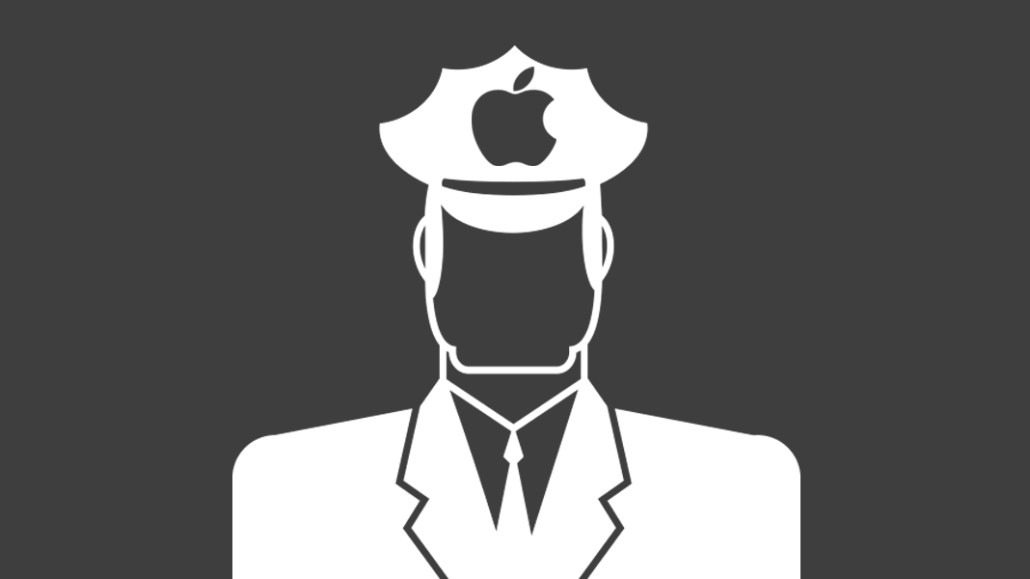Save 50% on a 3-month Digiday+ membership. Ends Dec 5.
Publishers are caught in the crossfire of the Facebook-Apple fracas

Facebook and Apple are squabbling, and publishers are caught in the middle.
Publishers were supposed to be the winners of Facebook’s long-awaited plan to provide a path to sell subscriptions in its Instant Articles. But the test was delayed because Apple didn’t want Facebook to let publishers sidestep its App Store and avoid giving Apple its customary 30 percent cut of in-app purchases.
A source familiar with the matter said Facebook’s view is that Instant Articles are just another version of the mobile web but that Apple sees Instant Articles as in-app content that should therefore be subject to in-app payments.
So the test will launch on Android devices only (Google, which also is working on plans to help publishers sell subscriptions, apparently didn’t put up the same fight with its Android system).
Facebook wouldn’t comment on the record about the dust-up, and Apple hasn’t replied to a request for comment.
This isn’t the first time Apple has been a thorn in publishers’ side. The problems go back to the launch of its iPad, when Apple, with its single-minded focus on consumer experience and privacy, wouldn’t let publishers sell subscriptions to their magazines or bill customers directly. Then, there were the problems with the App Store, which made it hard for publishers to get their apps approved and discovered.
Publishers are getting welcome traffic from Apple’s aggregation app, Apple News, but Apple makes most of its money from selling devices, not advertising, and publishers said they’ve seen little advertising revenue from the app.
Ad position: web_incontent_pos1
The current fracas over subscriptions might frustrate Facebook, but it’s the publishers that increasingly depend on subscriptions as their lifeblood as Facebook and Google soak up most of the digital ad revenue growth that will feel the actual impact of it.
“These major technology companies have had academic debates about how to treat content,” said David Chavern, president of the News Media Alliance, which represents publishers like Dow Jones and The New York Times. “We’ve got to make sure news publishers don’t get crushed between the wheels. We need to find models that sustain the news business, so we have a civic society. This isn’t just a debate about how to monetize skateboarding videos.”
Jason Kint, CEO of Digital Content Next, a trade association for premium digital publishers, saw a bright side. “The fact we have a dominant closed platform like Facebook pressuring a dominant closed platform like Apple means early signs of progress,” he said. “I suggest they figure it out quickly.”
The Facebook subscriptions test is set to start in the next few weeks in Instant Articles with 10 publishers in the U.S. and Europe, including The Washington Post, Bild and The Telegraph. The test is a way for Facebook to answer publishers’ growing clamor for Facebook to help them monetize their content on the platform. The test also helps push Instant Articles, the fast-loading mobile article format that Facebook rolled out in 2015, which has had mixed reaction from publishers, with some high-profile ones pulling their content from the feature.
Facebook’s subscription test will support publishers with metered models (starting at 10 articles a month) and freemium models where the publisher controls which articles are locked. When people hit the paywall, they’ll be prompted to subscribe and sent to the publisher’s site to pay. The publisher will control pricing and data on the consumer and keep all the revenue. Facebook also will test call-to-action units in publishers’ Instant Articles that prompt people to subscribe before hitting the paywall.
Ad position: web_incontent_pos2
Facebook will show some people Instant Articles, and others will see traditional mobile web articles. Over a period of months, it’ll compare how many articles people in each group read the articles and how many people ultimately subscribe to that publisher.
More in Media

Digiday+ Research Subscription Index 2025: Subscription strategies from Bloomberg, The New York Times, Vox and others
Digiday’s third annual Subscription Index examines and measures publishers’ subscription strategies to identify common approaches and key tactics among Bloomberg, The New York Times, Vox and others.

From lawsuits to lobbying: How publishers are fighting AI
We may be closing out 2025, but publishers aren’t retreating from the battle of AI search — some are escalating it, and they expect the fight to stretch deep into 2026.

Media Briefing: Publishers turn to vertical video to compete with creators and grow ad revenue in 2026
Publishers add vertical video feeds to their sites to boost engagement, attract video ad spend and compete with news creators.
Ad position: web_bfu








